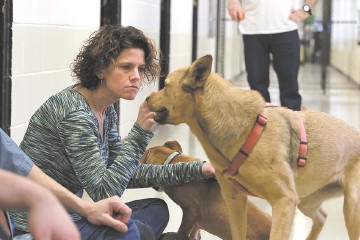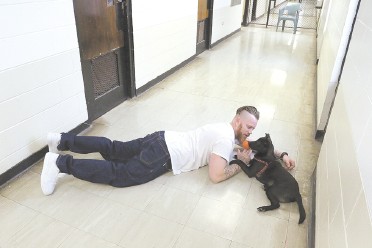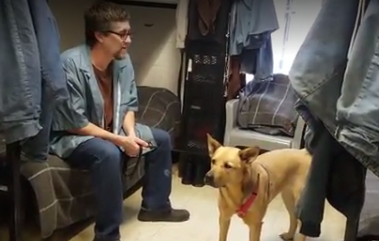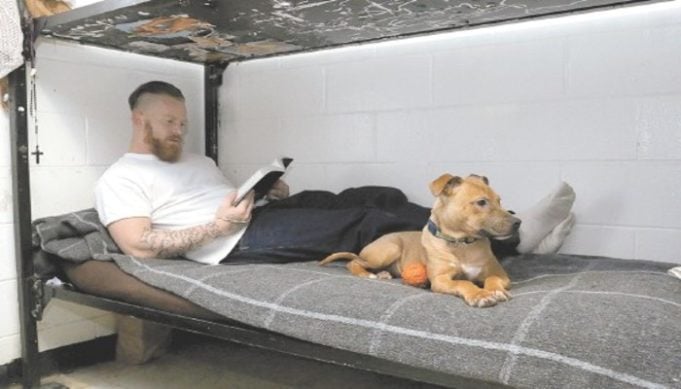A Massachusetts prison participates in a project which matches troubled shelter dogs with prisoners who train them – and the results are incredible.
In West Boylston, Mass., six inmates at the Worcester County Jail & House of Correction rehabilitating shelter dogs to get them homes, and being rehabilitated themselves in the process.
The Program
Project Good Dog is a program which takes at-risk shelter dogs (those whose stress or behavior renders them less likely to get adopted) and pairs them with an approved prisoner. The dog lives with the inmate, receives the vital attention and training he or she needs, and gets adopted.
One prisoner stated that there really isn’t anything positive about jail, but that the dogs help bring something positive to the inmates’ lives.
To date, 46 dogs have been rehabilitated through this program. Each dog who comes through Project Good Dog has a different story. One was rescued from a Korean meat farm. Another got saved from Hurricane Maria in Puerto Rico.
But no matter where they come from, these dogs all help the inmates get in touch with their positive emotions and gain a better chance at succeeding in the world upon their release.
One inmate said that many of the prisoners struggle with addiction, and that the dogs offer support when the inmates are undergoing addiction recovery.
RELATED: Labrador Trained by Inmates Now Sniffs Out Arson Fires
The program has been operating at this prison for three years, and now has expended into three houses of correction at the facility.
Funding comes from a Petsmart Charities grant. Coordinator Hilary Carlson matches the dogs with their primary and secondary handlers at the prison.

All of the 46 dogs who have gone through this program have been successfully adopted, according to Carlson. Happily, 40 percent of those were actually adoptions to staff members who fell in love with the dogs!
The Typical Life of a Prison Dog
Every morning, Carlson comes to the facility and lets the dogs outside. After that, the pooches spend the rest of their day doing normal dog things – eating, sleeping, and playing with the inmates.
They are given a routine which prepares them for the life ahead once they get adopted, according to the Second Chance shelter development manager.
Everyone is after the perfect dog when they enter a shelter to adopt, but sometimes the dogs aren’t always showing their true or best selves because of the intense stress and lack of sleep that occurs for shelter dogs.

The inmates in this program are able to give something to the dogs which they desperately need but shelters can’t afford to give – time.
Training a dog and rehabilitating it from stress and trauma requires a lot of time and patience. And it just so happens that the inmates have plenty of time, and have no choice but to have the patience, too.
“Win-Win-Win Situation”
This time and attention gives the dogs the resources they need to be able to form positive connections with humans. So, they eventually go on to get adopted into loving homes once their work in the program is finished.

Of high importance is the effect this program has on the long-term outcome of the prisoners. Upon release, program participants are much less likely to return to prison or a life of crime afterward.
According to Sheriff Lewis Evangalidis, there is only an 18 percent rate of re-offense among program participants after release, as compared to 50 percent of recidivism rates in those who do not participate in this program.
It’s great for the dogs, who go on to get homes. It’s great for the inmates, who find purpose and are able to “feel some positive emotions” again. And it’s even great for the prison guards, who observe a great reduction in stress in the environment when the dogs are present. This allows the guards to feel safer at work.
According to Sheriff Lewis Evangelidis, the program is a “win-win-win” situation for all involved.
READ NEXT: Researcher Found a Way to Improve Adoption of Rescue Dogs













